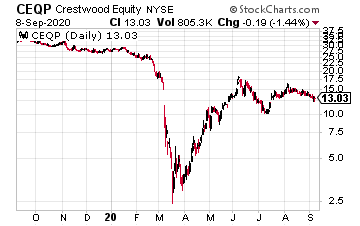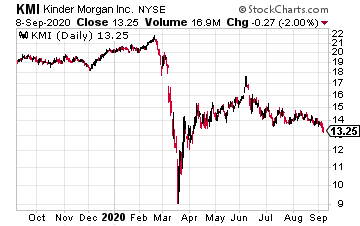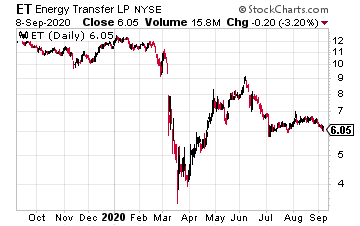For the broader U.S. stock market, the pandemic-triggered crash has come and gone. In February and March, the S&P 500 stock index experienced a short-term bear market, dropping by over 35% from its early-February peak to the late-March bottom.
The S&P 500 steadily recovered the losses and then some, with the index now up 11% year-to-date; however, the recovery has not been even across business sectors. The S&P Energy sector remains mired in a bear market, still down 42% year-to-date. Is it time to look for value in this very shunned sector of the stock market?
Energy subdivides into three sectors:
- Upstream are the oil and gas producers. These are the drillers of wells.
- Downstream energy companies refine fuels and market their finished product.
- Midstream energy companies provide the connection between upstream and downstream and are the ones we’ll look at in this article. Midstream companies own and operate pipelines, storage terminals, export terminals, and natural gas processing facilities.
Your 3-Step Retirement Plan Starts Tomorrow Morning [ad]
Unlike the other two energy sectors, midstream business operations generate stable, mostly long-term contract, fee-based revenues. Unfortunately, the investing public lumps all energy stocks together, and midstream share values are as volatile as the rest of the sector.
Over the last several years (since 2016), companies in the midstream sector have restructured their business models and financials to generate stable earnings and rely less on the debt and equity markets to fund growth. The restructuring has been successful. Alerian stated in a recent article: “…the large-cap names that did not cut their distributions earlier this year continued to provide solid coverage, demonstrating the benefits of a focus on sustainable distribution growth and capital discipline that the space has been moving towards for years.”
For the 2020 second quarter (when energy prices crashed), Alerian reported the constituent companies in the Alerian MLP Infrastructure Index (AMZ) generated average cash flow coverage of 1.8 times the distributions paid. In 2016 and 2017, average coverage was much lower at 1.2 times. The dividend coverage is much stronger here in 2020 than it was a few years ago. That is despite the pandemic hit to the energy sector.
One more quick point: about half of the midstream companies trading on the stock exchange are organized as Master Limited Partnerships (MLPs). The AMZI index tracks just MLPs. There are great corporate and MLP companies in the midstream sector.
“…my dividend flow from an average of $4,500 to $8,500 per month since I joined up with [you] 2 years ago! As to the goal of securing a reliable monthly income, I think your service is far superior to the expense heavy and tax burdensome alternative of annuities! Thank you!!!”
— John G.
Click here for details on how John used the 3-step method to grow his income by 88% in 2 years.
Current dividend yields show how terribly undervalued these stocks are. The average yield for the AMZI over the last five years is 8.0%. As of this writing, the average yield sits at an astonishing 12.5%. Think about that. You have companies with close to two times cash flow coverage of their distributions and double-digit yields.
It seems inevitable that the investing public will, at some point, figure this out, come back into energy midstream, and drive share prices back up to pre-crash levels.
Here are three energy midstream companies that did not cut dividends and have excellent cash flow coverage of those distributions:
Crestwood Equity Partners LP (CEQP) increased its quarterly dividend in January 2020 by 4.2%. The company has paid a steady, sustained dividend since 2016.
Cash flow coverage for the second quarter was 1.6 times the distributions paid.
Crestwood currently yields an astounding 18.6%.
Kinder Morgan Inc. (KMI) increased its dividend by 5% in April this year. Second-quarter distributable cash flow covered the dividends by 1.7 times.
As the energy sector continues to recover, Kinder will have over two times coverage and should continue with annual dividend increases.
Kinder shares currently yield at 7.6%. A year ago, Kinder was priced to yield less than 5%.
Energy Transfer LP (ET) is a large-cap MLP that has paid a $0.305 per share quarterly dividend since the 2018 first quarter.
For the 2020 second quarter, Energy Transfer reported 1.5 times distributable cash flow coverage of the distributions paid.
The shares have another eye-catching yield of 19.4%.
This is highly unusual, and you should take advantage.









